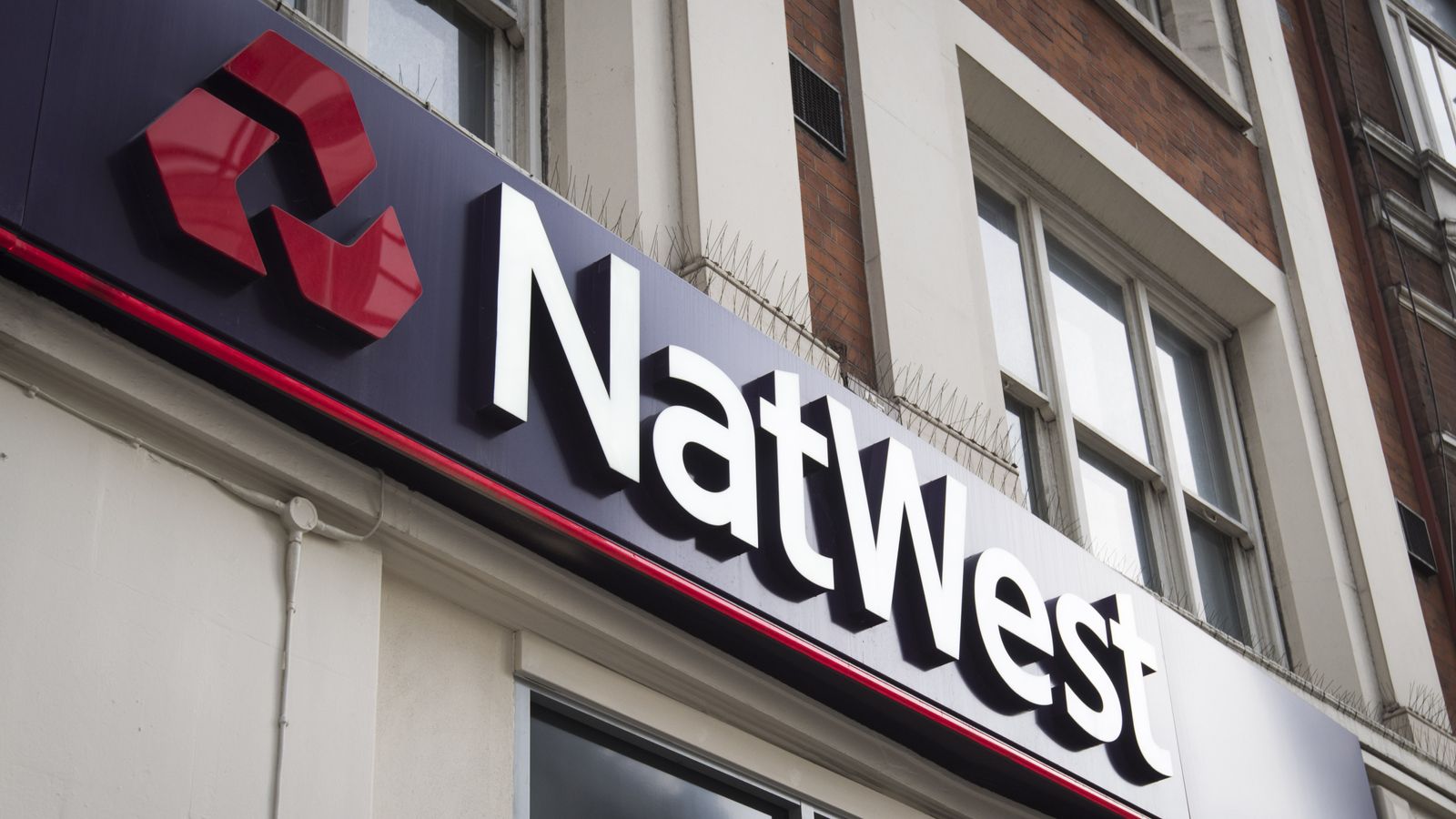NatWest has beaten expectations by recording a pre-tax profit of £1.8bn in the first three months of the year.
This is well ahead of forecasts by analysts of £1.6bn for the quarter and more than 50% higher than the £1.2bn recorded this time last year.
It follows rival bank Barclays posting a better-than-expected profit and its largest in at least 12 years.
NatWest Group, which includes the Royal Bank of Scotland and Ulster Bank, also saw its total income surge by more than a third over the period, bolstered by higher interest rates which makes it more expensive to borrow.
However, it said nearly £20bn was withdrawn from accounts during the period, which it partly blamed on its exit from the Republic of Ireland this year, following the decision to shut its entire Ulster Bank branch network in the region.
When this was excluded, £11bn was taken out of the bank, or 2.6% of its total customer deposits, which was put down to higher tax payments, competition for better savings rates and market volatility.
It also set aside £70m to cover bad loans.
Read more:
NatWest chief gets huge bonus
All 43 branches shutting across UK
NatWest reported a growing number of people using its fixed-term savings products in the first quarter as people looked to make the most of higher interest rates.
On deposit outflows, chief executive Dame Alison Rose told Sky News’ Ian King Live programme: “There’s a number of things going on. Obviously, January, February, it’s a big period when tax gets paid.
“And we’ve seen more people caught in the tax bracket. So big tax outflows, which are a normal seasonal flows.”
She added: “We have seen customers proactively paying down some of their debt.
“A little bit of mortgage prepayment, a little bit of more expensive debt being paid down.
“And we are seeing a little bit of system liquidity come out where people are using maybe a little bit of that buffer they built up during COVID to continue spending and absorbing inflation.
“But we are genuinely seeing customers economising sensibly and good decisions happening around their balance sheets.”
The bank’s results demonstrate resilience in the face of high inflation, which squeezes household budgets and raises the
risks of borrowers falling behind on loan repayments.
High prices also increase the chances of Bank of England interest rates staying higher for longer, pushing up borrowing costs and further curbing consumer spending.







